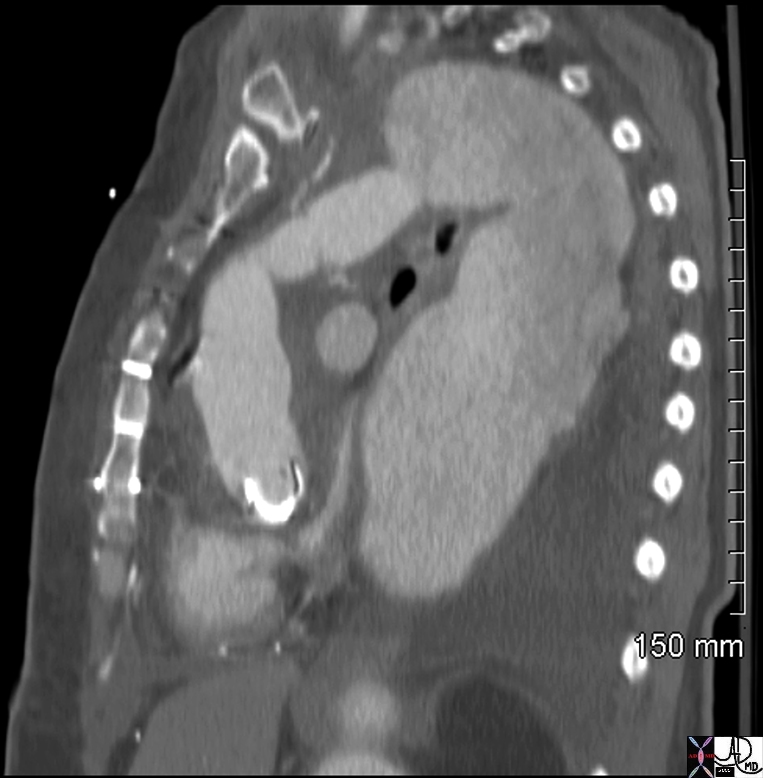|
Thoracic Aortic Aneurysm Copyright 2007 Ashley Davidoff MD Aortic aneurysym is a condition characterized by a bulging of the aortic wall and associated symptoms. 2-5% of aneurysms occur in the thoracic aorta Cause Caused by arteriosclerosis, aortic trauma, aortic inflammation, heredity, and syphilis. atherosclerosis destroys medial elements Pathogenesis atherosclerosis causes weakening of wall aorta dilates tension increases acceleration of the process Laplace’s Law: tension is proportional to the product of pressure and radius) Result Dilation can occur anywhere along the thoracic aorta Most common sites are the arch and descending aorta Natural History Five year survival in one study was 27% for symptomatic and 58% for asymptomatic thoracic aneurysms Complications Rupture of an aneurysm is heralded by the dramatic onset of excruciating pain Aneurysms greater than 7 cm are more prone to rupture than smaller ones and symptomatic ones are more prone to rupture than asymptomatic ones Diagnosis Clinical Symptoms are secondary to impingement on adjacent structures Tracheal deviation , stridor, hemoptysis, dyspnea, pneumonitis from compression of the tracheobronchial tree, hoarseness from compression of the laryngeal nerve, dysphagia from esophageal compression, SVC syndrome, and pain is due to compression and erosion on musculoskeletal structures and is usually steady and may be severe Imaging Treatment Elective resection is recommended for thoracic aneurysms greater than 6 and in some institutions 7 cm in diameter, 2 times normal diameter, or if symptomatic Major operative complications include paraplegia from inadvertent interruption of the spinal cord’s arterial blood supply (5%) and those secondary to associated arteriosclerosis (MI, CVA, renal failure, etc.) |

Persistent Descending Thoracic Aneurysm
61 year old female post op repair of ascending aortic aneurysm with Bental procedure with dropping blood pressure and odecreasing oxygen saturation aorta left atrium LA heart cardiac mediastinum fx compression of left atrium from anterior post operative mediastinal hematoma and posterior aneurysm of the descending aorta
fx lingula atelectasis and left lower lobe atelectasis bilateral pleural effusions dx supravalvular mitral stenosis CTscan
Ashley Davidoff MD TheCommonVein.net 47752
